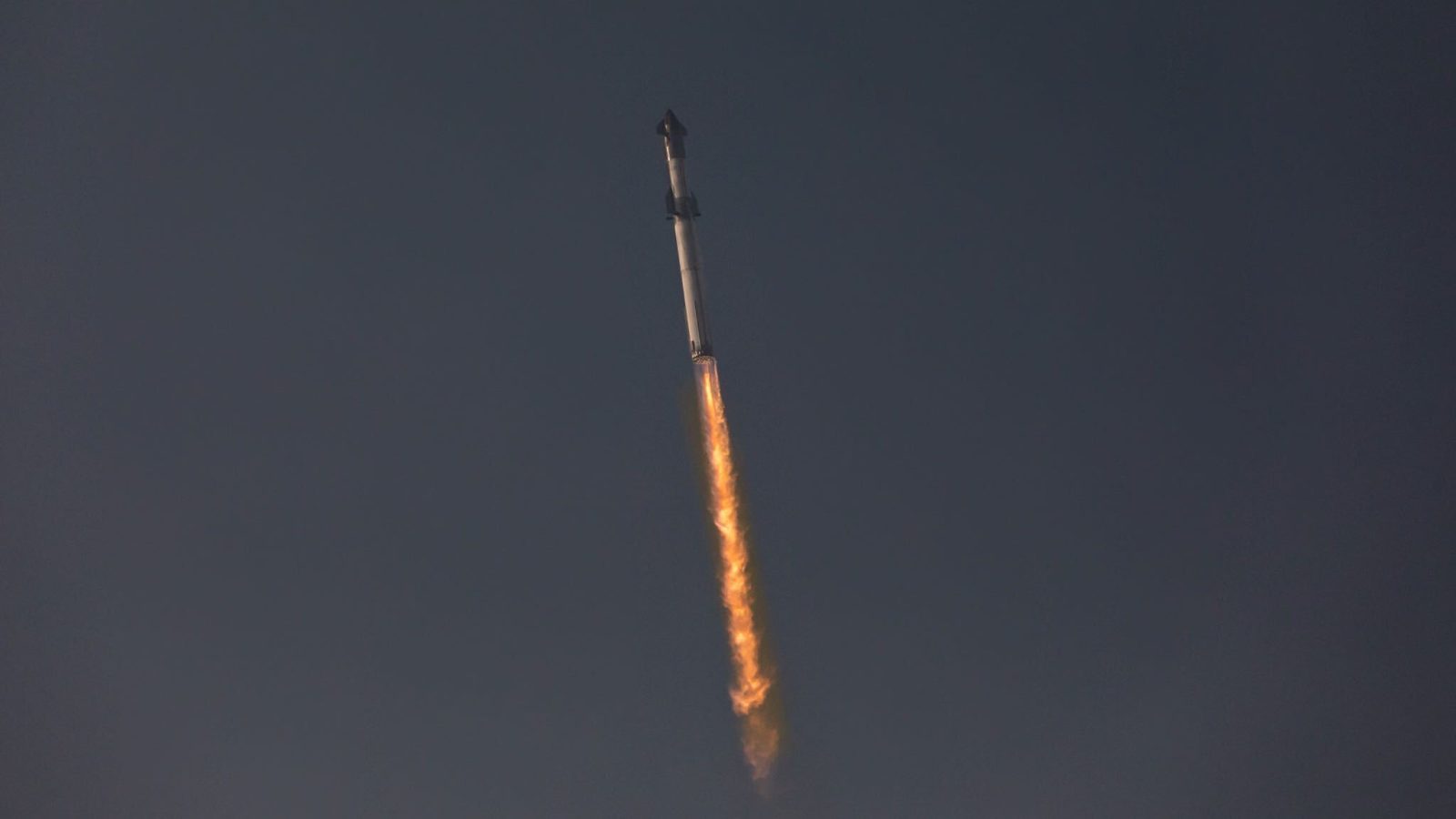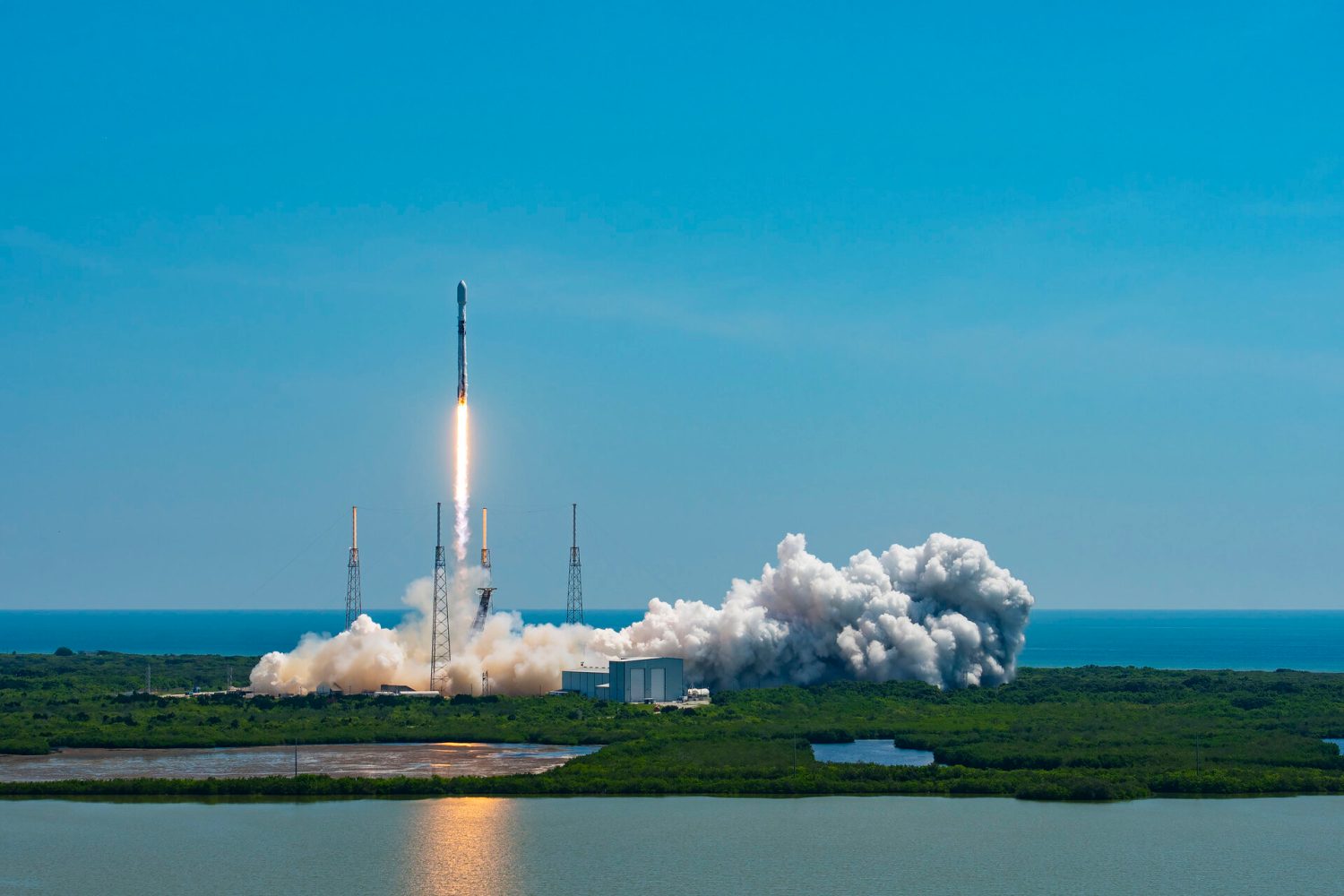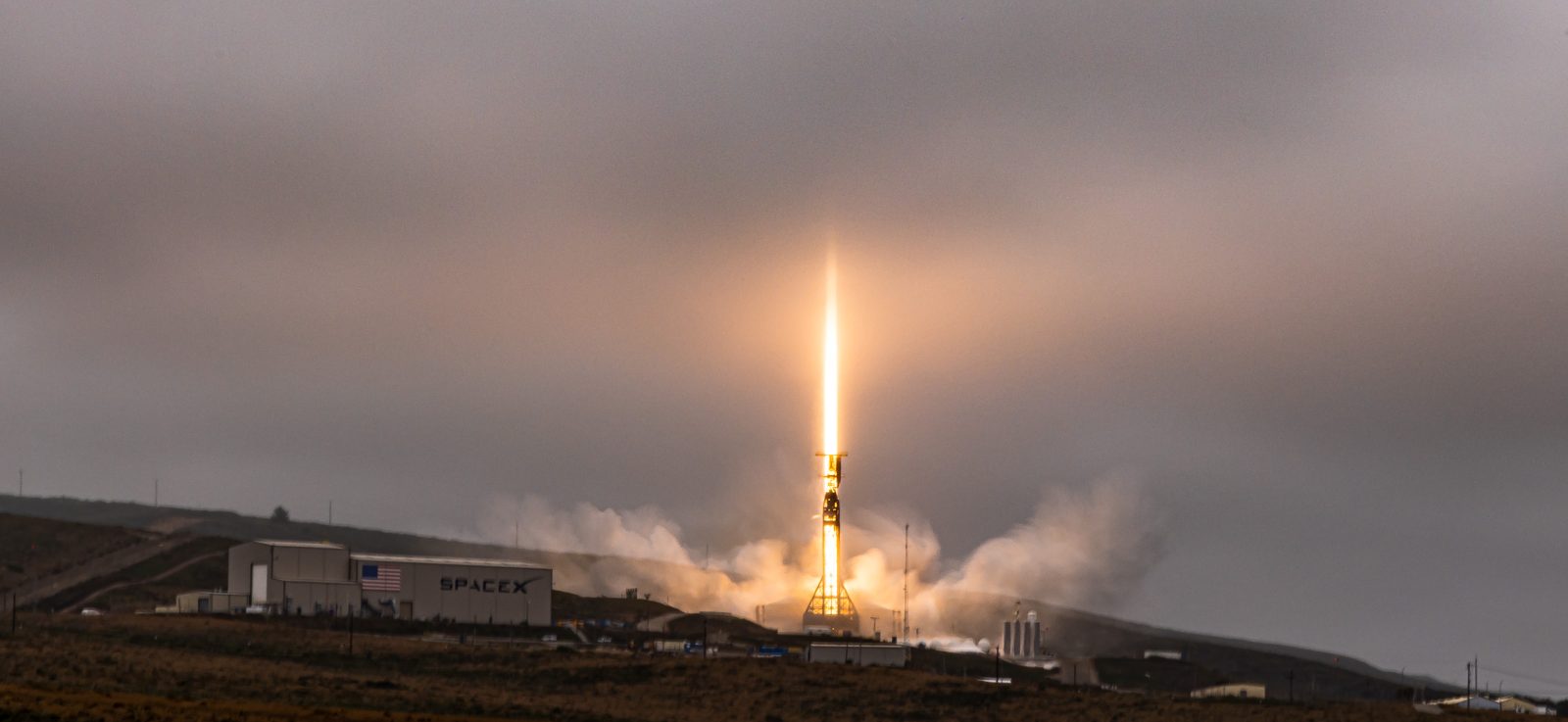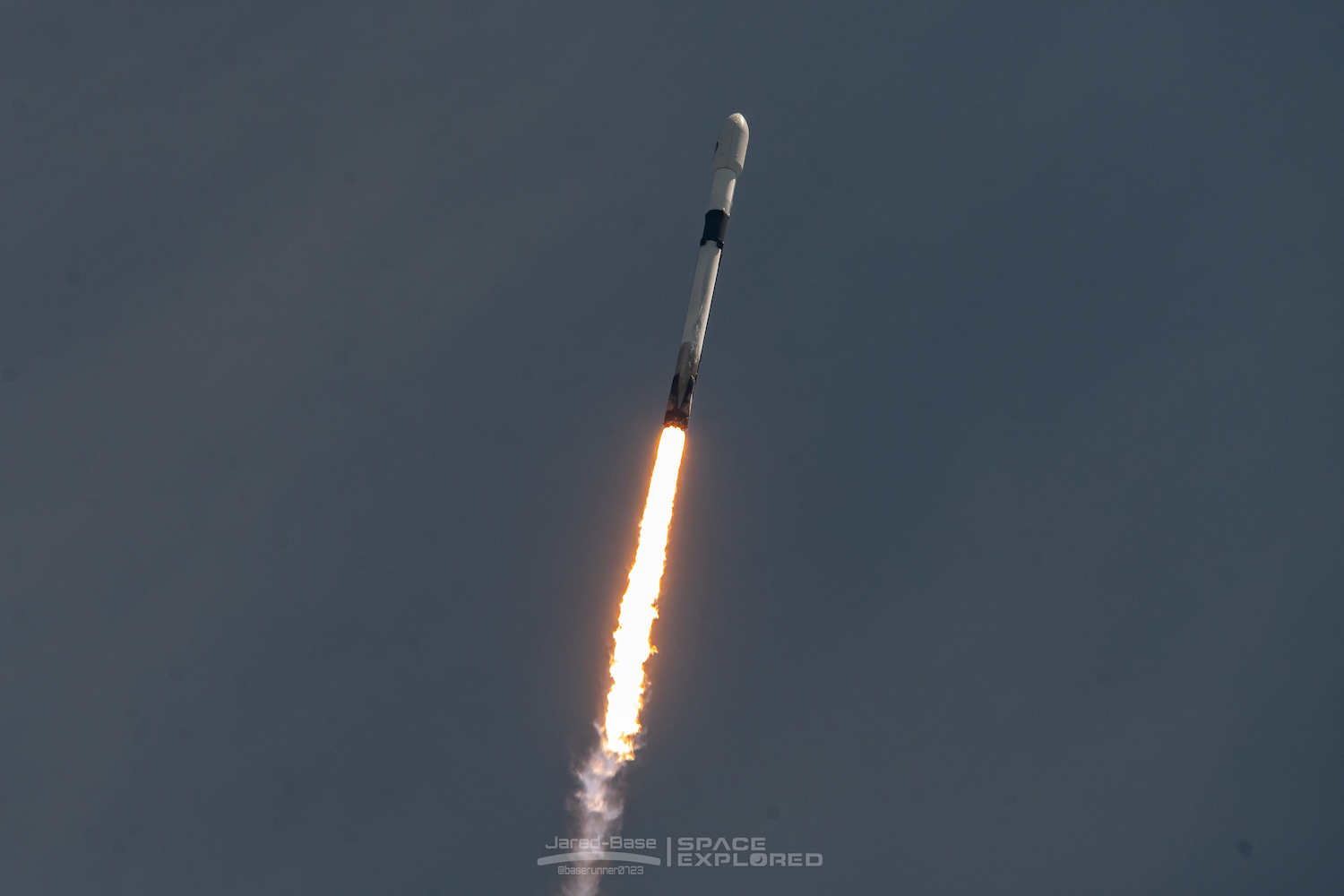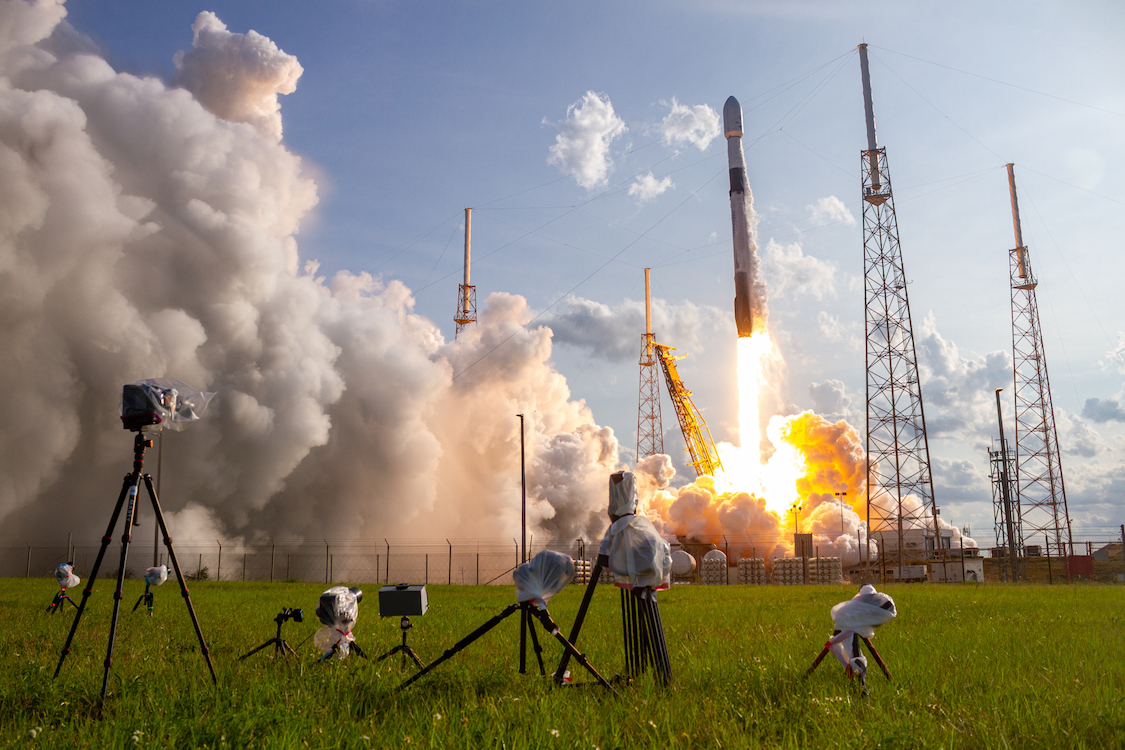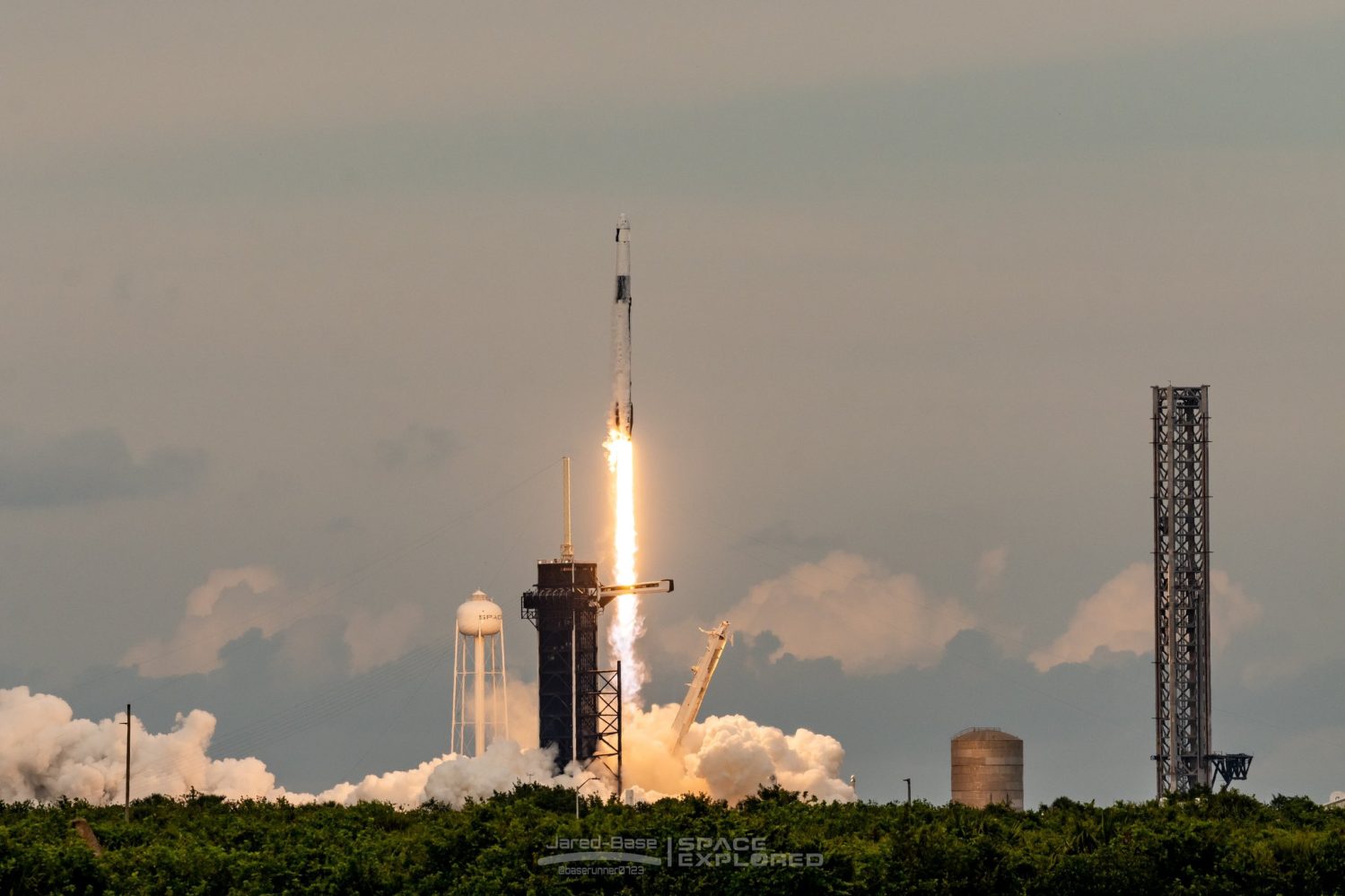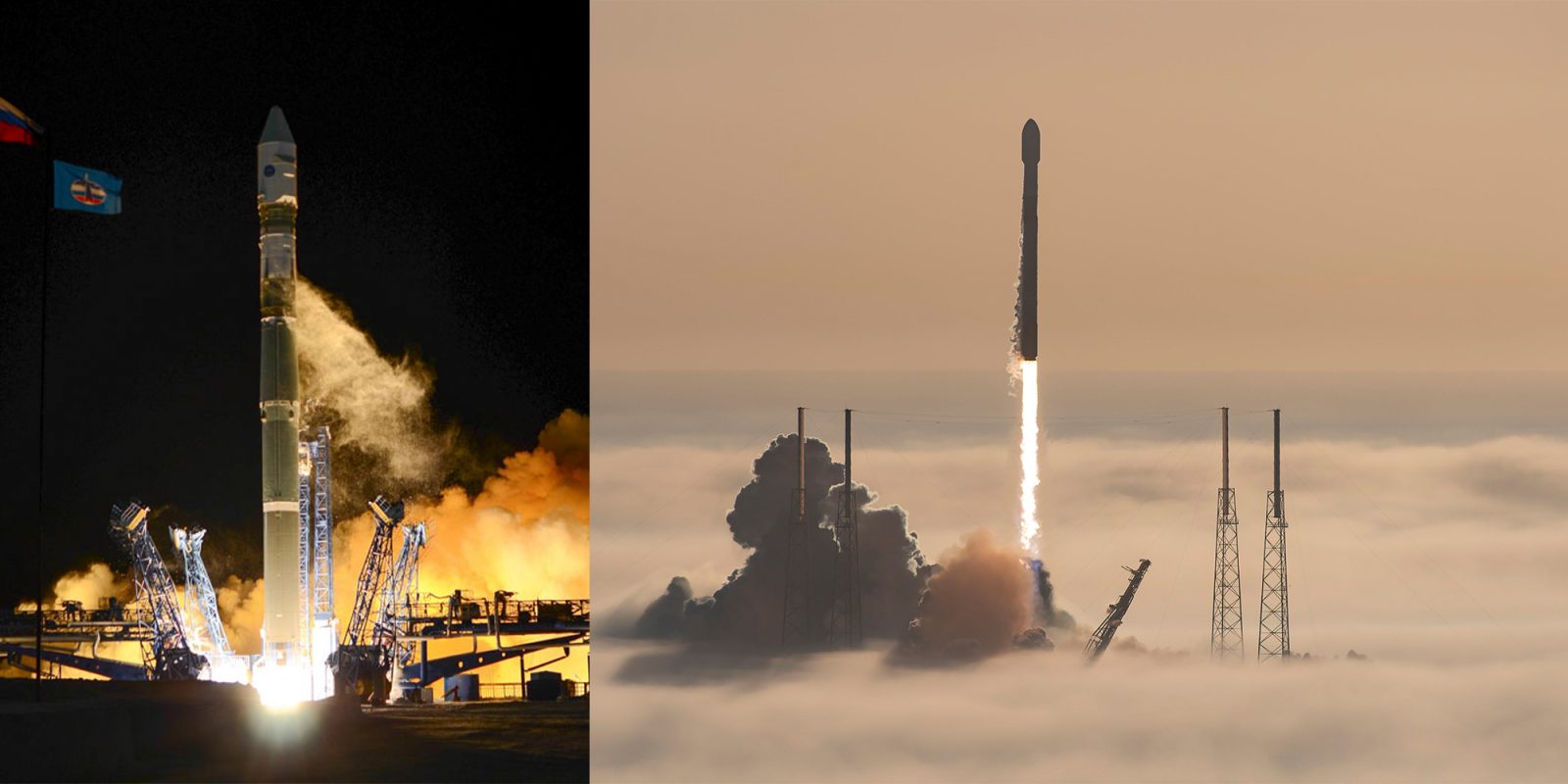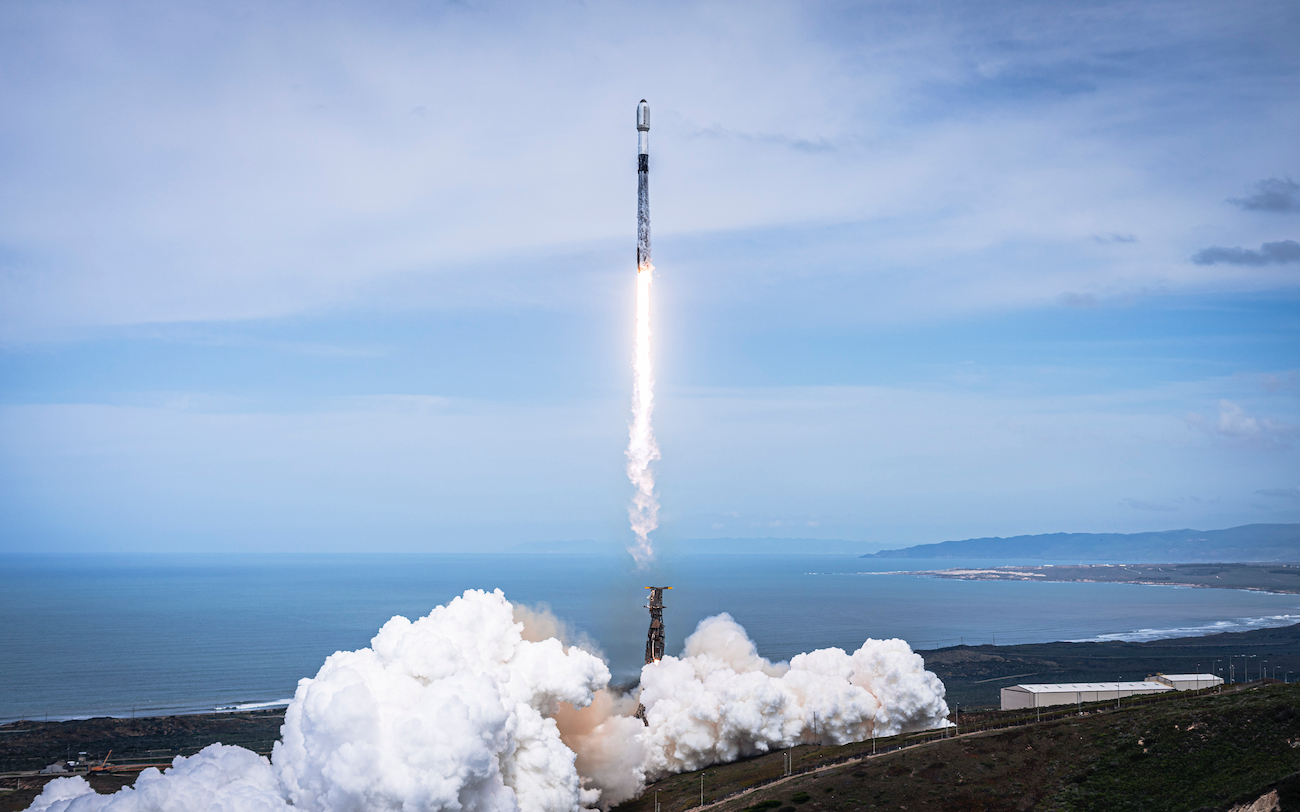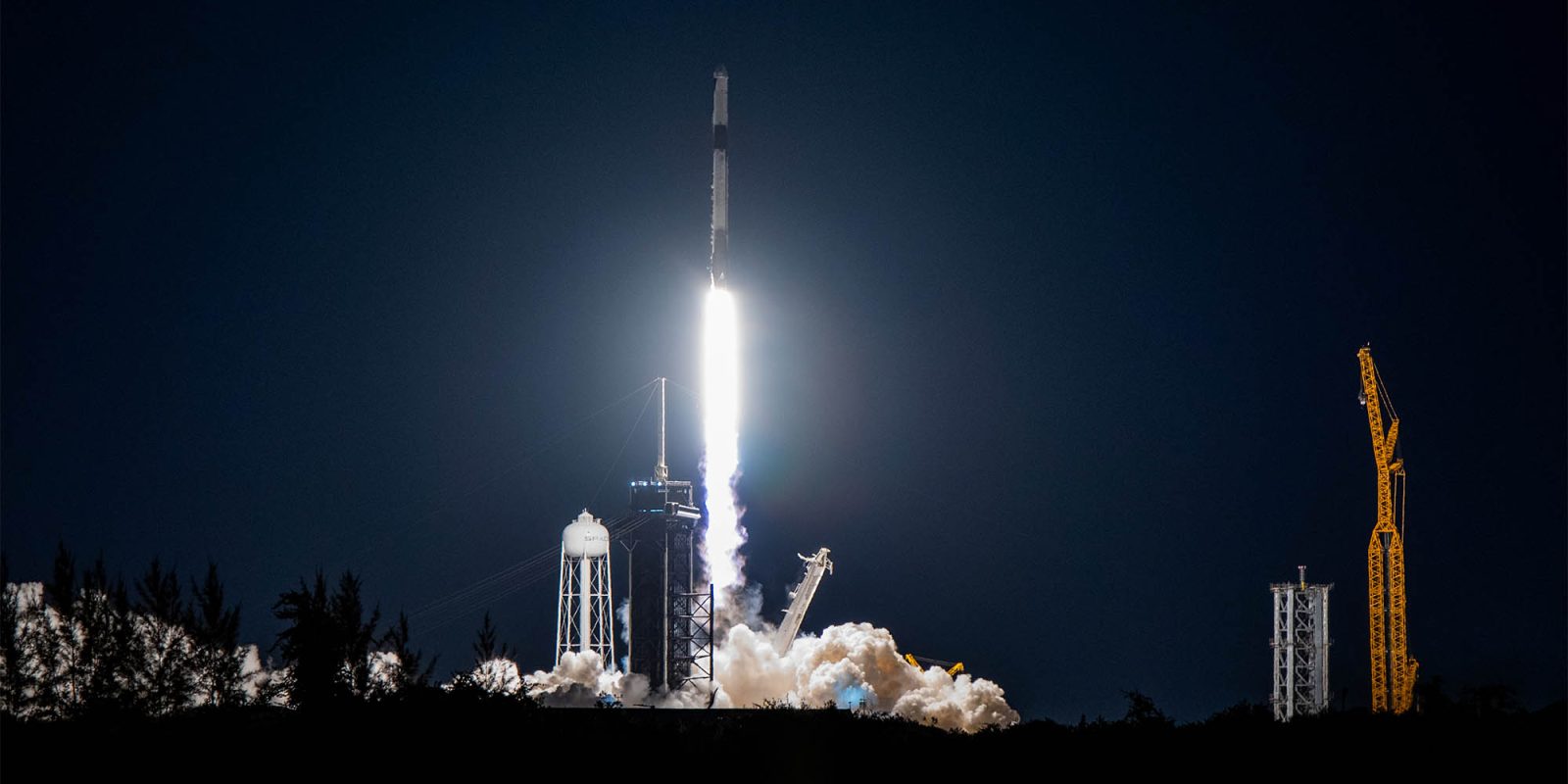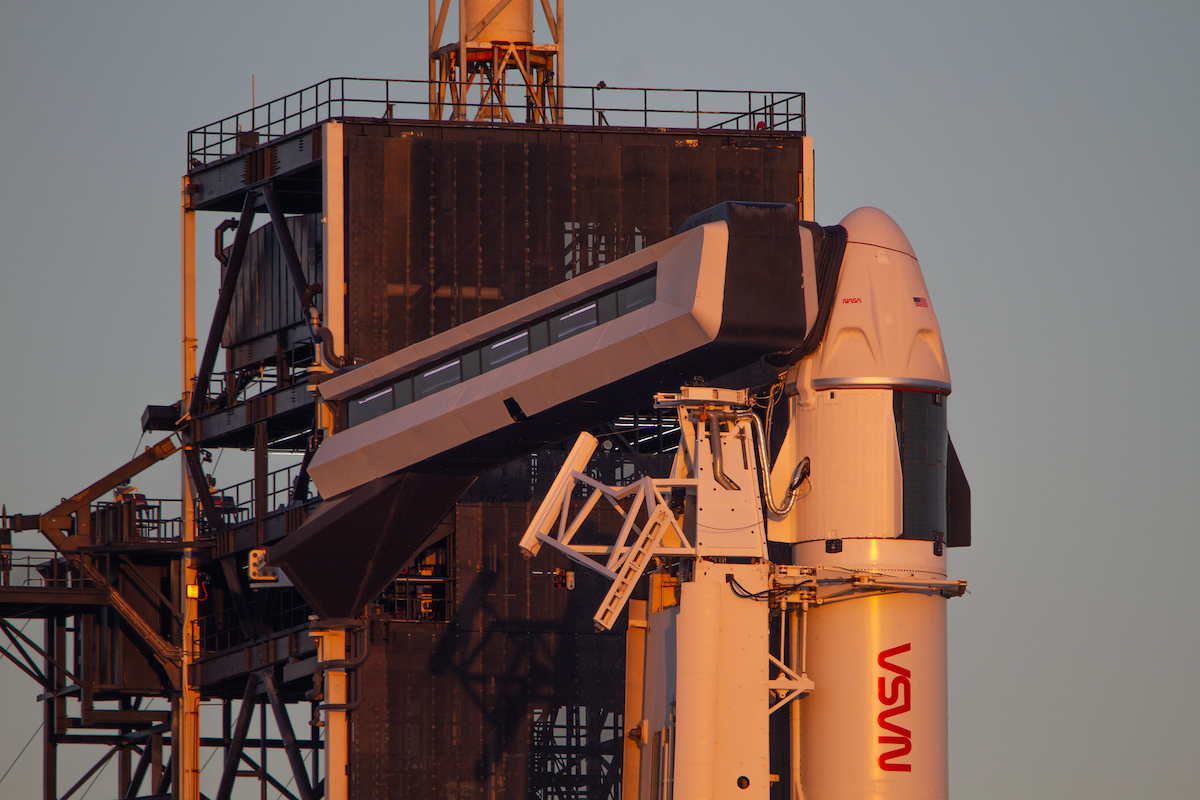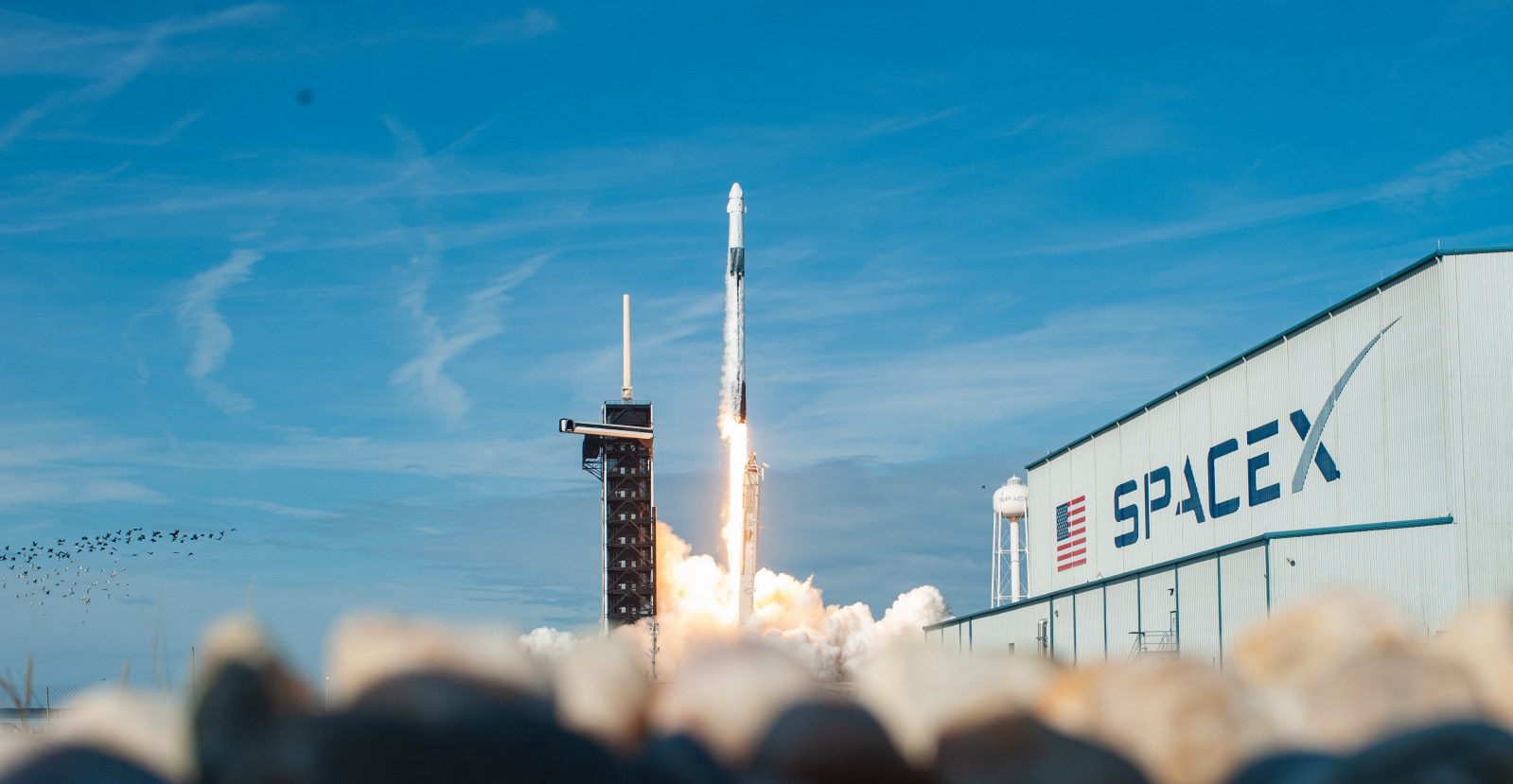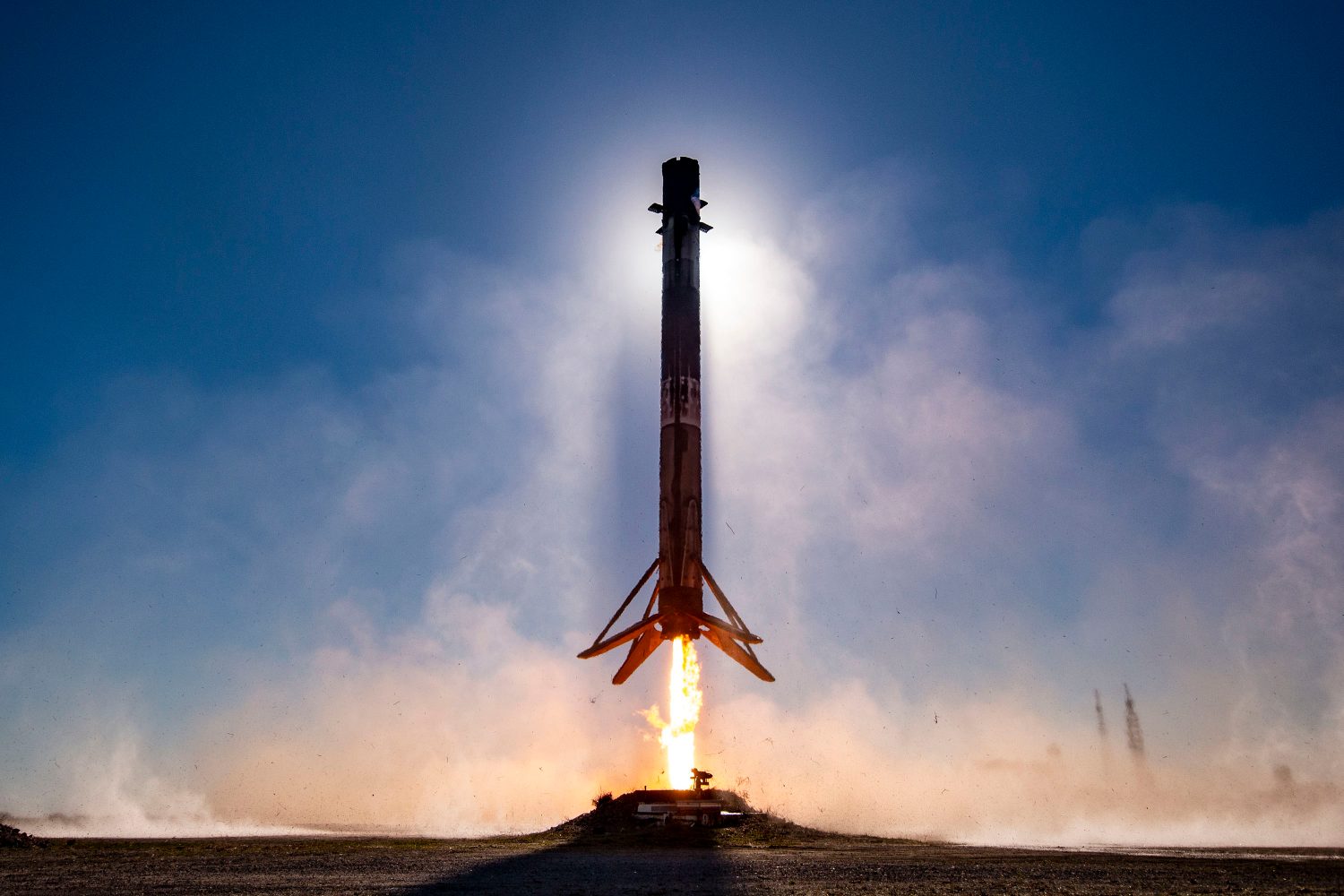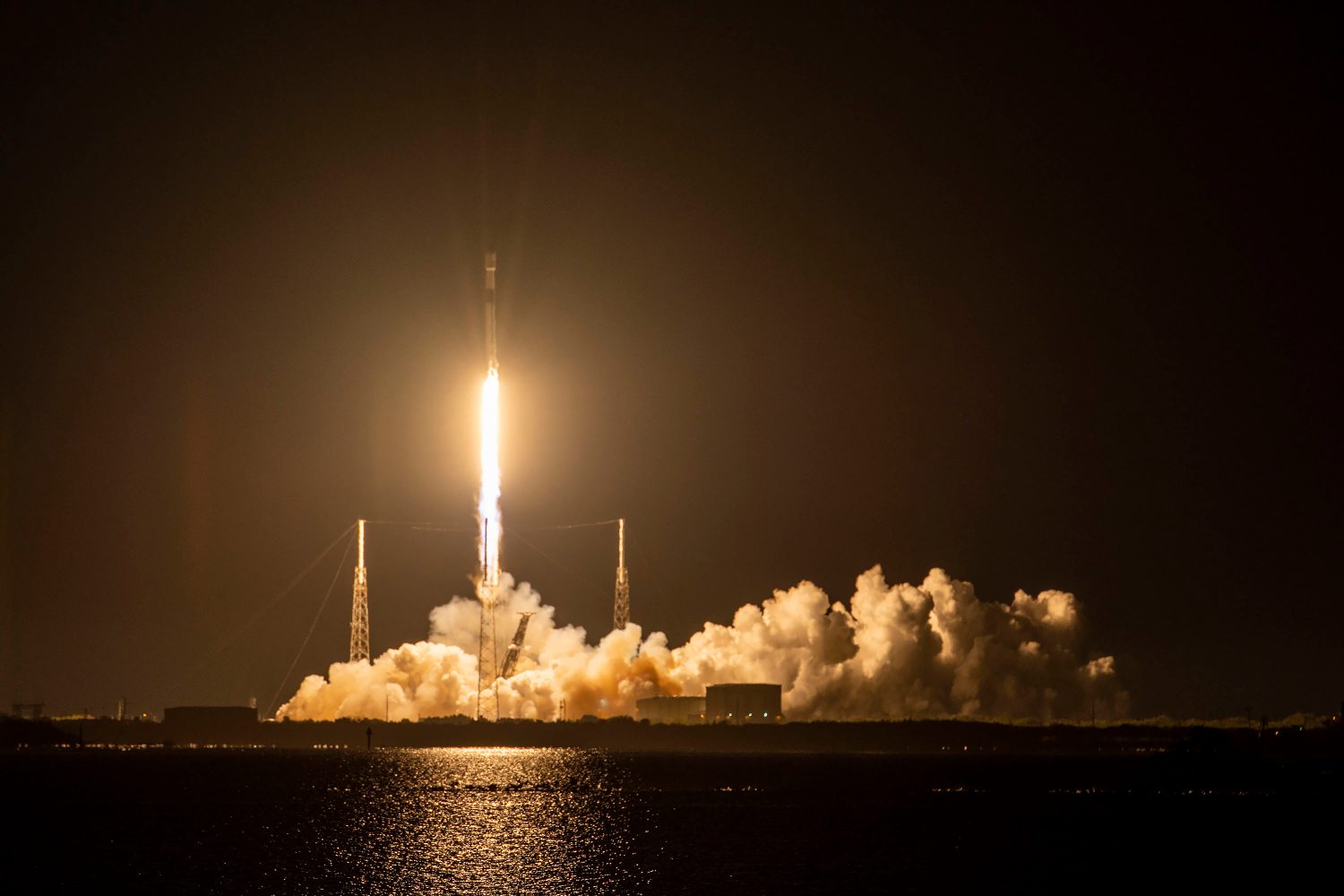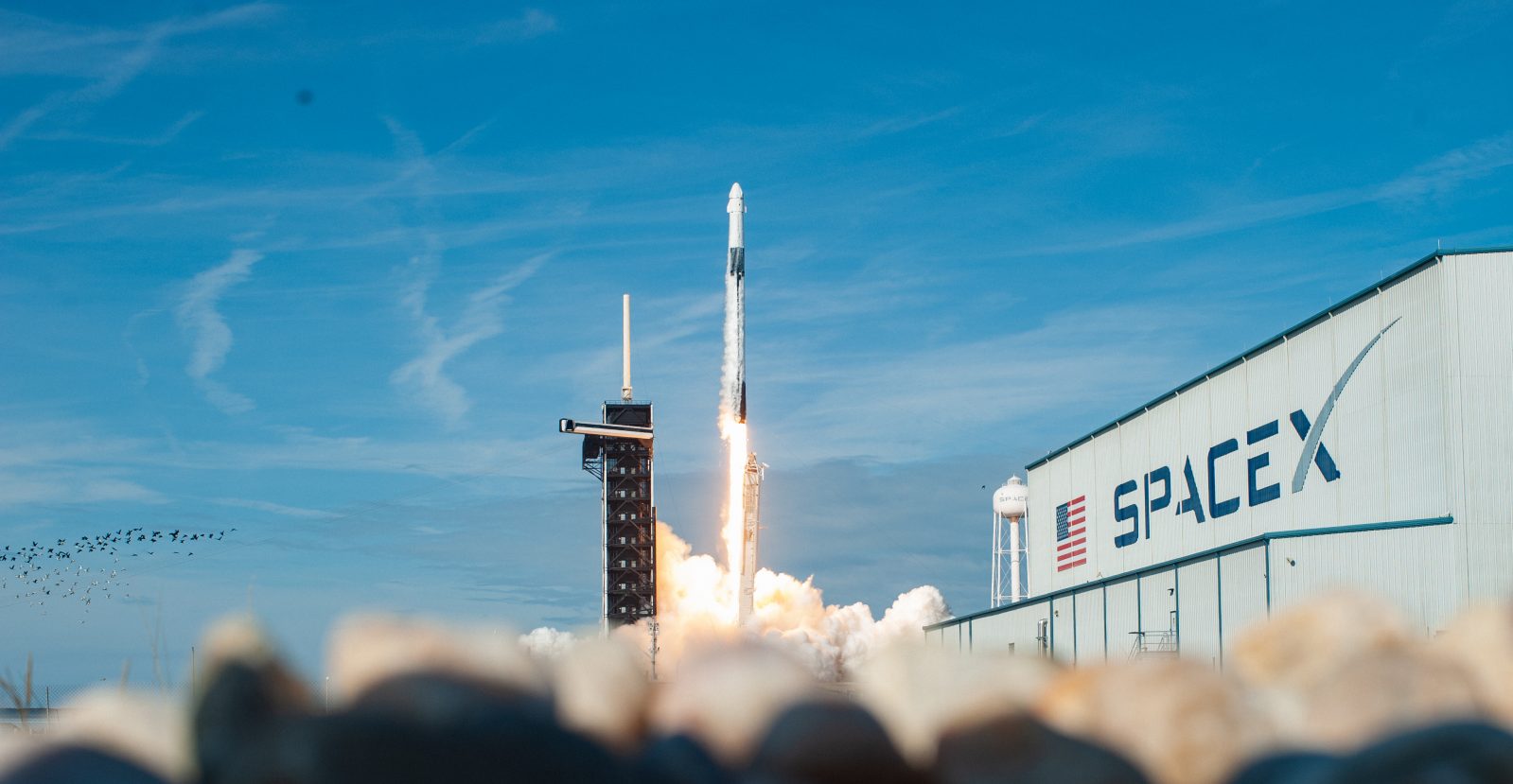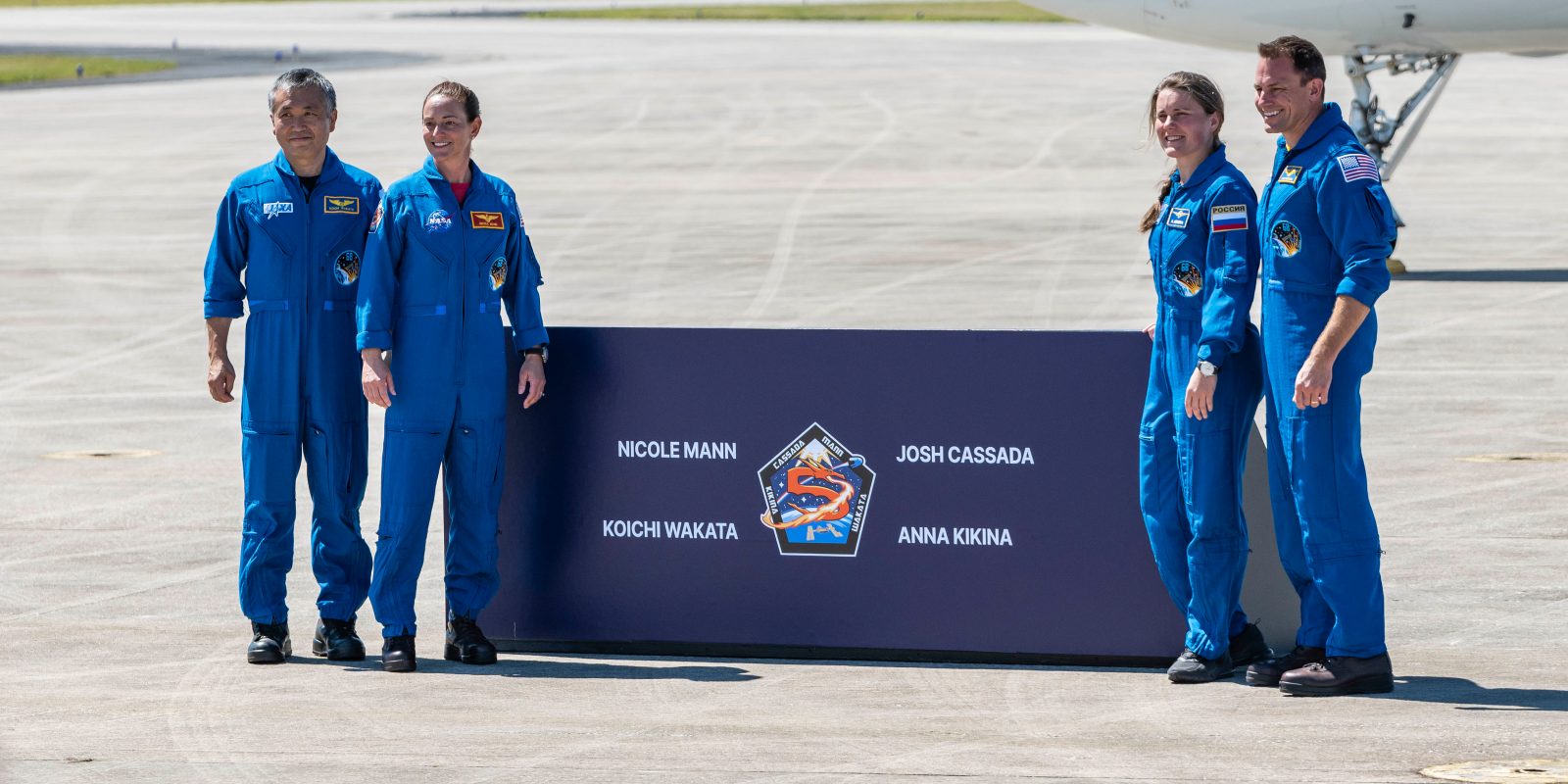Falcon 9
Falcon 9 is a reusable, two-stage rocket designed and manufactured by SpaceX. It is the world's very first orbital-class reusable rocket.

Table of contents
- The worlds first reusable orbital-class rocket
- Falcon 9 Reusability FAQ
- Why does SpaceX use parachutes?
- What are the white spots and lines on reused boosters?
- Why do boosters get darker every flight?
- Why doesn’t SpaceX clean the boosters?
- Why does SpaceX use droneships to land boosters? Why not return to land?
- Why don’t other rocket companies reuse their boosters?
- How do I know when the Booster will arrive in port?
- Where should I go to see a Falcon 9 Booster arriving?
- How are these Boosters numbered?
- How many times can a Falcon 9 booster launch?
The worlds first reusable orbital-class rocket
Falcon 9 is a reusable, two-stage rocket designed and manufactured by SpaceX. It is the world’s very first orbital-class reusable rocket. This reusability allows SpaceX to offer much lower-cost options to companies wanting to gain access to space.
The Falcon 9 rocket stands at 229.6 feet tall and has a mass of 1.2 million pounds. Its first stage is powered by nine Merlin engines that generate 1.3 million pounds of thrust at sea level, rising to 1.5 million pounds of thrust once the rocket reaches the vacuum of space.
Falcon 9 can carry payloads of up to 50,300 pounds to low-Earth orbit and payloads of up to 18,300 pounds to geostationary transfer orbit (GTO). As of November 2023, SpaceX has launched 272 Falcon 9 rockets have been launched.
Falcon 9 Reusability FAQ
Why does SpaceX use parachutes?
This question is a bit more complicated, so we wrote a whole article on it.
What are the white spots and lines on reused boosters?
The spots and lines that appear lighter on the boosters after flight are where SpaceX cleans the boosters for inspections between launches. They focus on inspecting the welds, so they clean those areas to ensure the booster is safe and ready for the next flight but they don’t clean the rest of the booster.

Why do boosters get darker every flight?
During descent, in addition to a large amount of heat generated, a Falcon 9 flies through its own exhaust during the reentry and landing burns. This deposits soot onto the sides of the booster while the legs, in their folded position, create a clean outline where the soot cannot reach.
Why doesn’t SpaceX clean the boosters?
Simply put, it is extremely costly and delays the re-flight of a booster without providing any tangible benefit. With SpaceX sometimes reusing boosters less than a month after a previous launch, those delays are costly. Likewise, using harsh chemicals or even just directly spraying boosters with water is not ideal. It doesn’t take much to cause issues. In 2020, a small piece of masking lacquer in a Merlin engine caused an engine issue that delayed multiple launches as they investigated the problem, so any risks should be avoided. Besides, just as predicted this dirtier style has truly become a space-fan favorite.
Why does SpaceX use droneships to land boosters? Why not return to land?
Landing boosters on droneships saves a great deal of fuel and increases the possible payload the booster can carry to orbit. When landing on a drone ship, the booster can continue on its trajectory and land a few hundred kilometers out into the ocean, but for a return to the launch site, the booster needs an additional boost back burn to cancel the horizontal velocity and return back to land. Depending on the payload size and flight profile of the rocket determines if SpaceX can land its boosters on land or require a droneship.
However, SpaceX is still learning in this area when it comes to launches. When SpaceX began launching its Dragon 2 capsule neither its crewed nor cargo variants could land back on land. However, after a decade plus of flight experiences and always trying to improve the rocket’s performance, SpaceX found a profile for both crewed and cargo Dragon 2 flights to return to LZ-1.
Why don’t other rocket companies reuse their boosters?
Reusing boosters is expensive and potentially risky. There is an added degree of complexity that comes with the reuse of boosters. SpaceX has an array of chartered vessels to safely return boosters, fairings, and Dragon capsules back to port which all cost money. Reusing boosters also decrease the payload to orbit of a rocket. Any fuel that needs to be used for landing is then not able to be used to accelerate the payloads.
SpaceX also follows a far different design and testing philosophy from companies like ULA. SpaceX will take many risks and fail many times over in order to develop and progress quickly; just look at Starship. ULA, on the other hand, tends to work slower and more conservatively in an attempt to ensure success and at the first launch. Reusing a rocket includes an inherent risk of failure, especially on a first attempt. According to Tory Bruno’s estimate, they would need to fly a booster 10 times in order for it to be financially justified. This is far off from the two flights that SpaceX claims they need, but even so, SpaceX has far surpassed that 10 flight number. SpaceX’s current reflight record is 18 flights.
Even with these challenges, more rocket companies are quickly moving towards reuse. ULA has the “SMART reuse” for their upcoming Vulcan rocket. Rocket Lab is a great example of a company modifying its existing rocket design for reusability, although that isn’t always possible. Rocket Lab’s next rocket, Neutron, will have reusability in mind from the start. Relativity is another company that will have reusability in mind when developing its Terran R vehicle.
How do I know when the Booster will arrive in port?
Depending on the specific trajectory of the mission, boosters launched from Florida usually arrive in Port Canaveral about 3-4 days after launch. The return can be tracked using apps like MarineTraffic if you pay for Satellite tracking, free tracking is available if they are near the shoreline. An excellent resource for the time of these arrivals is Gavin Cornwell (@SpaceXFleet on X). He tracks the movement of both SpaceX boats and other rocket-related boats and shares his time estimates for arrival.

Where should I go to see a Falcon 9 Booster arriving?
When a Falcon 9 booster is coming into port it can be seen for miles along Cocoa Beach. To get the best, up-close view you can enter Jetty Park to see the booster arrive from on the Pier. It costs $15 a day to enter or you can purchase an annual pass. If you don’t want to pay for viewing, Freddie Patrick Boat Ramp is a public boat ramp directly next to Jetty Park. The downside of this area is that you will not be able to see the booster until it turns into the Port.
Once the booster has docked for processing, there is a small grass park that provides an excellent viewing opportunity that sits between Gators Dockside and Rusty’s Seafood. Please park in the parking across the road, the parking on the port side of the road is meant specifically for restaurant patrons.
How are these Boosters numbered?
Falcon 9 Boosters are numbered with a B followed by a four-digit number. The original V1.0 boosters started with B0000, but after the first seven they moved to B1001 and count up sequentially from there. There is a second number that follows the booster number, which is often used to designate the launch number. This is separated by either a period or a hyphen. Internally, SpaceX uses a hyphen to designate this launch number.
The final two digits of the booster number are placed on the boosters. They are visible both near the Falcon 9 logo at the top of the booster and on newer boosters, the logo is also placed between the legs of the booster. Here the “51” can be seen as B1051-10 returned to port.
As you can see these numbers are painted in black so as the booster is used more and more, it becomes difficult to tell what booster they are.

How many times can a Falcon 9 booster launch?
Simply put, SpaceX doesn’t know. Originally thought to be 10 reuses, the amount of degradation was far less than expected and Elon has speculated that they could reach 100 launches of an individual booster. With more reuse means there will need to be more refurbishment, but SpaceX plans to continue pushing the life-leading boosters to their limits with the growing number of Starlink launches, where only their own payloads are at risk of a launch failure. Currently, booster B1058 is the life-leading booster, having flown 18 launches, starting with DM-2 in May of 2020 and most recently supporting the Starlink Group 6-26 mission.

